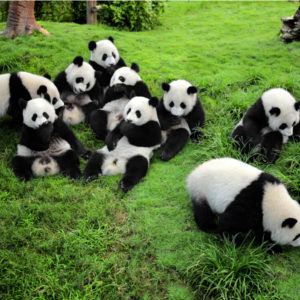Video courtesy of China tourism
China offers geographic diversity, spectacular landscapes and differing climates across a vast land. It is the world’s fourth largest country and home to the planet’s largest population with over 1.3 billion people. The west of the country is characterized by huge mountain ranges and remote deserts. The eastern provinces are home to flatter and more fertile terrain. Renowned natural attractions include the Himalayas –home to the world’s highest mountain –and the Tibetan Plateau which lies at an average altitude of 5,000-meters.
Many of Asia’s great rivers including the Yangtze, the Yellow River and the Mekong originate from the Tibetan Plateau. At 6,437-km long, the Yangtze is the third longest river in the world and it has carved dramatic gorges that lead to flood plains and giant lakes before it spills out into the ocean.
The far northwest of the country is a massive, desert land that contains China’s lowest point; the Turpan Depression. The endless grasslands of northern Inner Mongolia offer the chance to experience life in a lush, flat landscape that is dotted with traditional yurts.
The southwest is characterized by huge limestone landscapes such as the Stone Forest near Kunming and Guangxi’s incredibly beautiful sea of karsts towering between Guilin and Yangzhuo. Other notable natural attractions in this region include the steep Tiger Leaping Gorge in Yunnan. The far south is home to China’s best beaches, most of which are to be found on the sun-kissed tropical island of Hainan. China has a wealth of travel and tourism opportunities –the only limits are time!
Modern day Shanghai is now undisputedly at the front of the queue for many visitors to China, and if you stand still long enough, you will be left in the city’s wake. Modern architecture that will make science fiction movies look old and out of date, high fashion, cutting edge technology and the latest and greatest in everything, makes this evocative city a cut above all the rest. Developments are emerging left, right and center, the beating heart of the city centre never seems to rest, and yet, a few steps away from progressive modern infrastructure will bring you to round the corner to an ancient Buddhist monastery, street vendors selling freshly prepared dumplings on the sidewalks, and an array of incredible ancient Chinese gardens.
As one of the Four Great Ancient Capitals of China, Beijing is a massive city, and also one of the most populous in the world, with modern buildings and masses amounts of traffic all squashing in between imperial buildings and temples, as the people of Beijing go about their day to day life. Visitors have been traveling to the city for decades enthralled by impressive ancient relics, and the sensational landscapes of China’s capital city.
The city also has a relaxing teahouse culture, with a lively night-life and delicious spicy food and cuisine-rich culture. A favorite spot for locals and visitors is the “Wide and Narrow Alleys” in the Qingyang District, a hub of restaurants and street vendors selling Sichuan cuisine.
You will also find luxury accommodations, high-end boutiques, galleries and shopping centers popping up all over town! Especially, in the newly developed upscale Jinjiang District.
In the northeast the summers are hot and dry and the winters are freezing cold. The north and central regions have frequent rain showers along with hot summers and cold winters.
Cities Average High & Low Temperatures:
Beijing 26°C (79°F) 15°C (59°F)
Xi’an 25°C (77°F) 16°C (61°F)
Shanghai 27°C (81°F) 21°C (70°F)
Hong Kong 30°C (86°F) 26°C (79°F)
Showing all 5 results
-


 Asia & India, China, India, Japan, South East Asia
Asia & India, China, India, Japan, South East AsiaHistoric & Iconic Hotels, Luxury Island Retreats, Exotic Beachfront Villas & Design Boutique Hotels
Read more
Need Assistance?
800-227-5317 | sales@pacific-destinations.com
Tell us where and when you want to go and we’ll give your request our immediate attention! No high pressure sales, just straight talk and sound advice!

